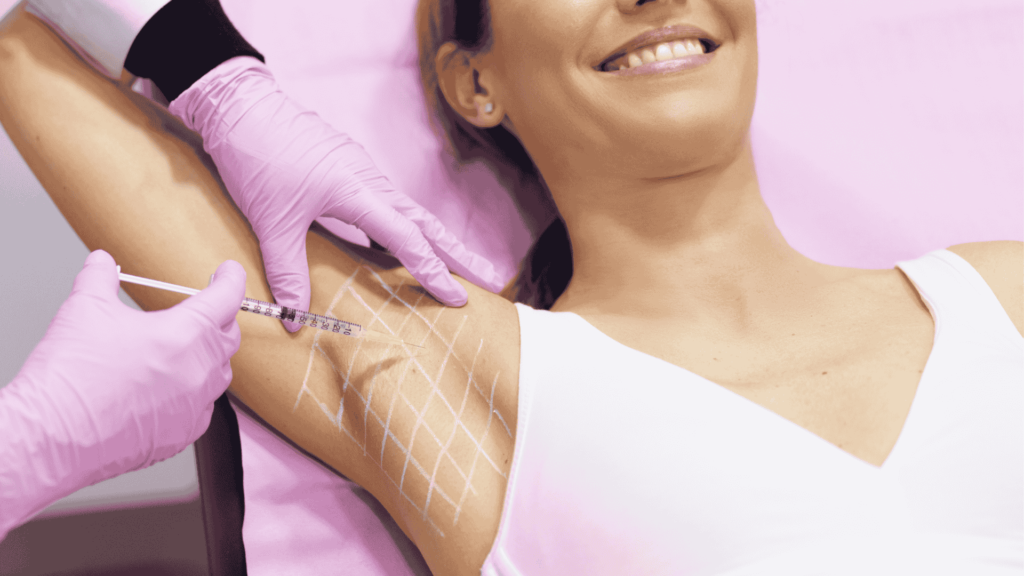
Side Effects of Botox for Hyperhidrosis: What You Need to Know
Botox for hyperhidrosis is an effective treatment to reduce excessive sweating. While generally safe, it can cause side effects. Understanding these risks helps you make an informed decision about receiving Botox for Hyperhydrosis.
How Botox Works for Hyperhidrosis
Botox blocks nerve signals that trigger sweat glands. This reduces excessive sweating in areas like the underarms, palms, soles, and forehead. The effects last 4 to 6 months, requiring repeat treatments for continued results.
Common Side Effects of Botox for Hyperhidrosis
Most side effects are mild and temporary. They typically appear within days of treatment and subside within a few weeks.
Pain or Discomfort at the Injection Site
Patients often experience mild pain, redness, or bruising at the injection site. This discomfort is temporary and usually resolves within a few days.
Muscle Weakness Near the Treated Area
Botox affects nerves controlling sweat glands, but nearby muscles may also be impacted. This can lead to temporary muscle weakness, especially in the hands.
Flu-Like Symptoms
Some individuals develop mild flu-like symptoms, including fatigue, headache, and fever. These effects are very rare and usually resolve within a few days without treatment.
Dryness in Treated Areas
While reducing excessive sweating, Botox may cause overly dry skin. Using a gentle moisturizer can help maintain skin hydration.
Less Common but Possible Side Effects of Botox for Hyperhydrosis
While rare, some patients may experience the following issues:
Compensatory Sweating
Botox reduces sweating in treated areas, but the body may compensate by increasing sweating in untreated areas.
Allergic Reactions
Severe allergic reactions are rare but possible. Symptoms include itching, rash, swelling, or difficulty breathing. Seek medical attention if these occur.
Temporary Difficulty Moving the Treated Area
When used on the face, Botox may cause temporary difficulty raising eyebrows or blinking if it spreads beyond the intended area.
Headache or Dizziness
Some patients report mild headaches or dizziness after treatment. Staying hydrated and resting can help alleviate these symptoms.
How to Minimize Side Effects of Botox for Hyperhydrosis
You can take several precautions to reduce the likelihood of side effects:
Choose an Experienced Provider: Dr. Moazemi will ensure accurate injections and minimizes risks.
Follow Post-Treatment Care Instructions: Avoid rubbing the treated area for 24 hours to prevent Botox from spreading.
Stay Hydrated: Drinking water helps your body process the treatment smoothly.
Use Ice Packs: Applying ice can reduce swelling and discomfort.
Who Should Avoid Botox for Hyperhidrosis?
Botox may not be suitable for everyone. Avoid treatment if you:
Are pregnant or breastfeeding.
Have a neuromuscular disorder.
Are allergic to botulinum toxin or its ingredients.
Have a skin infection at the injection site.
When to Seek Medical Help
If you experience severe side effects like difficulty breathing, vision changes, or muscle weakness beyond the treated area, contact a doctor immediately.
Conclusion
Botox for hyperhidrosis is a safe and effective treatment. Most side effects are mild and temporary. Choosing a qualified provider and following aftercare instructions can help minimize risks. If you’re considering Botox for excessive sweating, consult a specialist to determine if it’s right for you.


